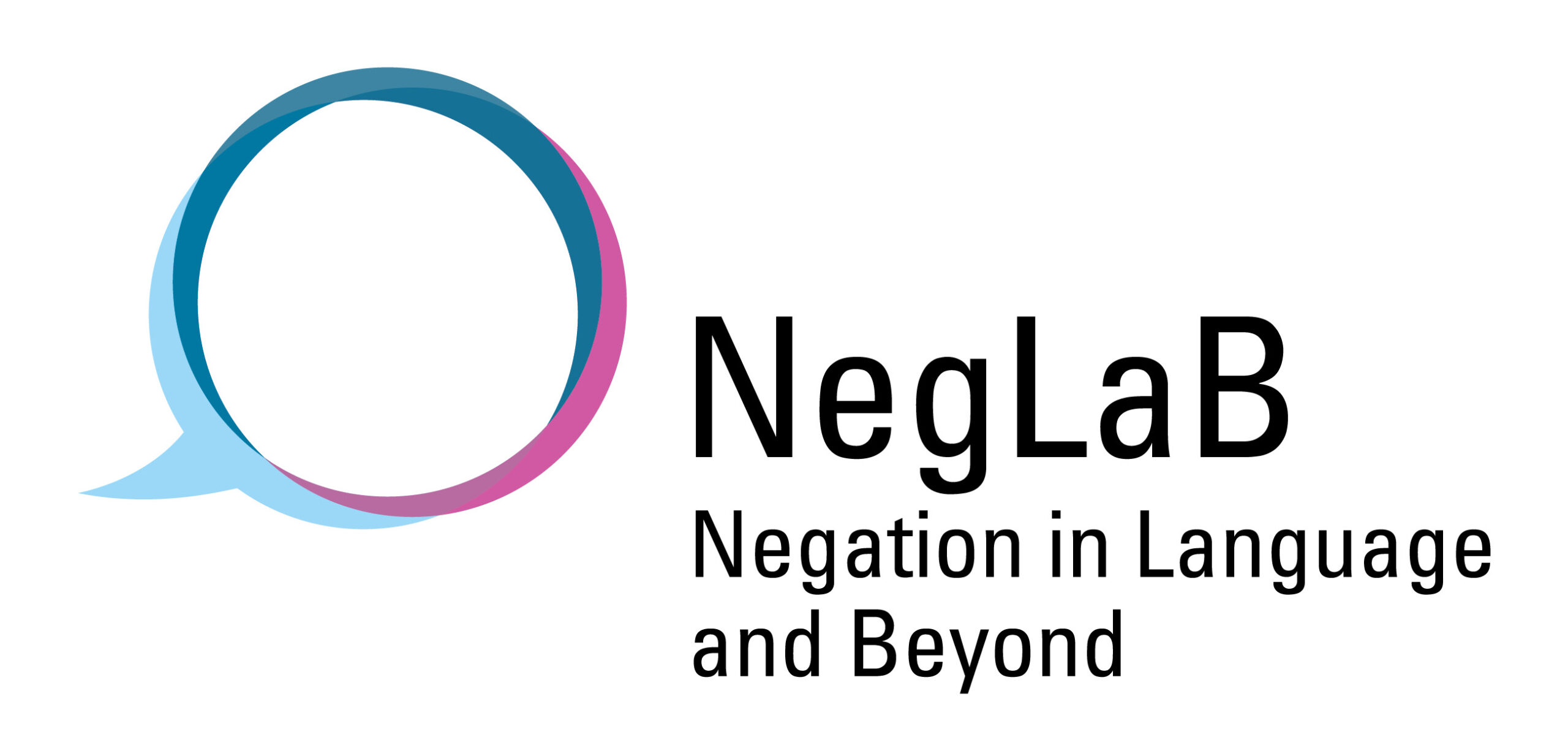Negation in Language and Beyond
Negation in Language and Beyond
SFB 1629 NegLaB

Negation is a fundamental property of human language that is tightly intertwined with human cognitive capacity. Negation allows speakers and hearers to reason about what is not the case, a unique property of human language. Thus, negation not only expresses a clearly defined and well-circumscribed grammatical function, it also interacts with various aspects of grammar and cognition. Specifically, it has been shown that the acquisition and processing of negation encompass linguistic as well as non-linguistic cognitive procedures1. Therefore, negation constitutes an ideal testing ground to enable us to differentiate cognitive mechanisms that are grammatical in nature from those that are shared with other cognitive domains, such as memory, attention, decision making and cognitive control.
We intend to explore how the expression of negation is cross-linguistically associated with grammatical and non-linguistic cognitive operations and also whether the set of operations observed in negative utterances is part of negation itself or, rather, arises as an effect of the grammatical system and cognitive functions. This constitutes a strong basis for a new comprehensive and unified understanding of the way meaning is expressed in natural language.
One area where the multifaceted nature of negation manifests itself is in the interface between syntax and semantics. While the semantics of negation is generally analyzed as a unique propositional operator, its morphosyntactic expression is much more varied and often involves more than one morphological exponent. Hence, the question arises as to how to resolve the tension between this rich morphosyntax and its more straightforward semantics. We will investigate precisely the tension arising from the comparison between the straightforward semantics of negation and its crosslinguistically very rich and varied morphosyntax as well as the supposed longer processing times and late acquisition of negation. The semantics of negation would lead one to expect negation to be expressed by a single morpheme positioned at the beginning of the clause (Neg-Only Hypothesis). The rich and variable morphosyntax would lead us to expect that negation requires a number of conditions in the semantics (Neg-Plus Hypothesis). We aim to solve this puzzle covering several empirical domains.
Another area where negation triggers more grammatical effects than may be expected on semantic grounds concerns the interaction between negative utterances and the cognitive processing and semantic evaluation of alternative propositions. This is reflected in acquisition, since children produce negative utterances relatively early, but all the aspects of negation take a rather long time to be acquired. Downstream effects of this prolonged acquisition process can be seen in adult processing as the comprehension of negative sentences is more costly than for positive sentences. This is supposedly due to the inhibition of the corresponding positive sentence that is necessary for the interpretation of negative statements.
Our exploration into the way negation and other grammatical categories or non-linguistic cognitive functions interact, and whether they share some properties or not, will lead us to identify how negation functions in natural language and how it favors or hinders the historical emergence of other (extra-)grammatical components or processes. Why do some of them need to occur together with negation (negative polarity items, NPIs) and why are others incompatible with it (as for some types of imperatives)? Our general aim is to develop a theoretical perspective on the way negation manifests itself in natural language, how it is acquired, and why it varies so much across languages. Thereby, we will gain a better overall understanding of the connections between purely linguistic competence and general cognition (e.g., inhibitory mechanisms, conflict-adaptation procedures, memory formation, etc.).
We will use a range of empirical methods to determine a) whether, how, and why negation does (not) stand alone; b) which grammatical categories it can or must link up with; and c) which procedures in negation processing and acquisition are shared with other linguistic phenomena and which ones are distinctive properties of negation. The planned Collaborative Research Centre (CRC) will tackle these questions using a variety of data and methodologies: corpus analyses, naturalistic data through fieldwork, eye-tracking experiments, electroencephalography, virtual reality experiments, grammaticality judgements, and self-paced reading tasks, etc.. We will assess whether and to what extent ‘there is more to negation than just negation itself’ and how negation interacts with other components within purely linguistic and non-linguistic cognitive systems.
- Aktuelles und Presse
- Pressemitteilungen
- Öffentliche Veranstaltungen
- Uni-Publikationen
- Aktuelles Jahrbuch
- UniReport
- Forschung Frankfurt
- Aktuelle Stellenangebote
- Frankfurter Kinder-Uni
- Internationales
- Outgoings
- Erasmus / LLP
- Goethe Welcome Centre (GWC)
- Refugees / Geflüchtete
- Erasmus +
- Sprachenzentrum oder Fremdsprachen
- Goethe Research Academy for Early Career Researchers
- Forschung
- Research Support
- Forschungsprojekte, Kooperationen, Infrastruktur
- Profilbereich Molecular & Translational Medicine
- Profilbereich Structure & Dynamics of Life
- Profilbereich Space, Time & Matter
- Profilbereich Sustainability & Biodiversity
- Profilbereich Orders & Transformations
- Profilbereich Universality & Diversity





